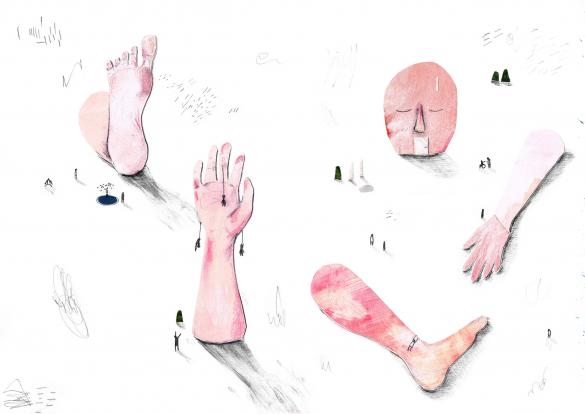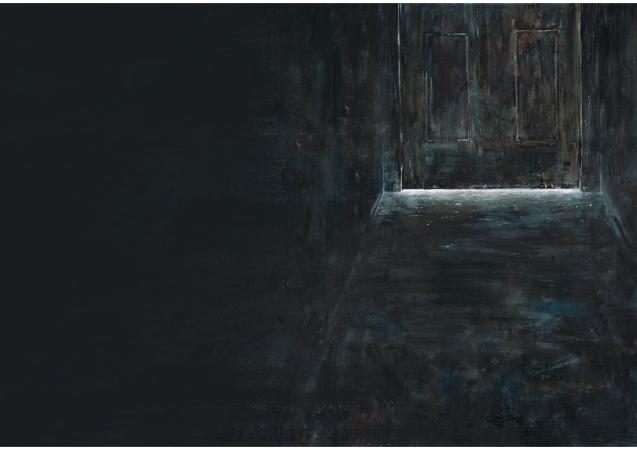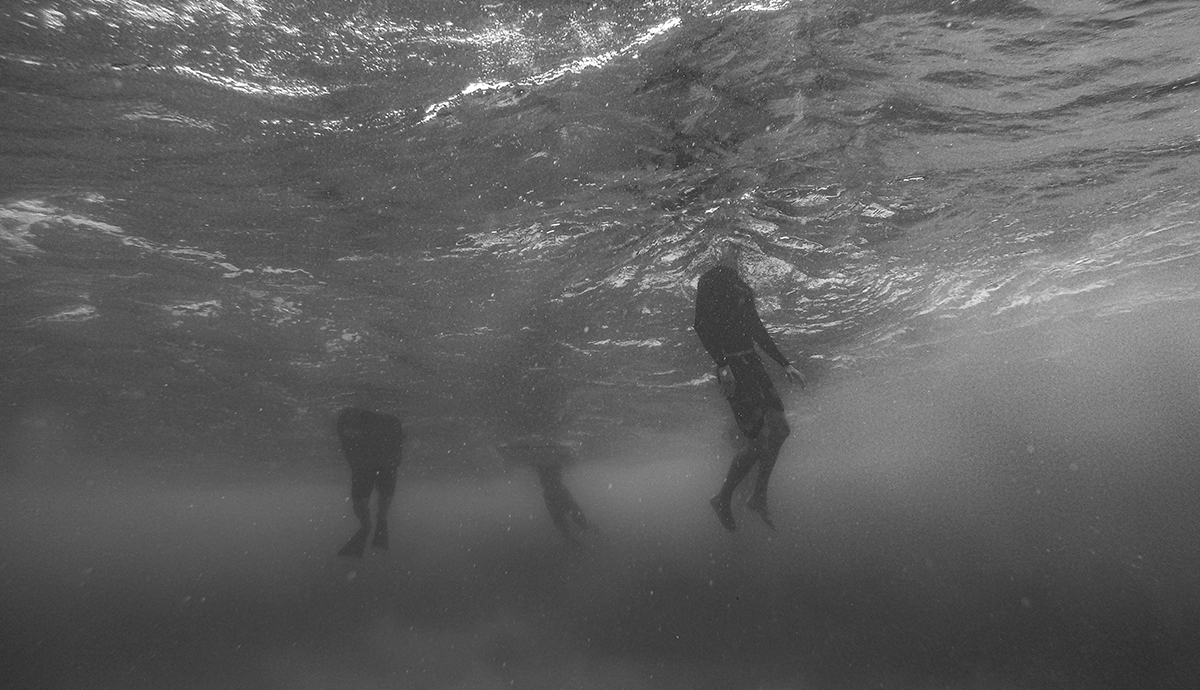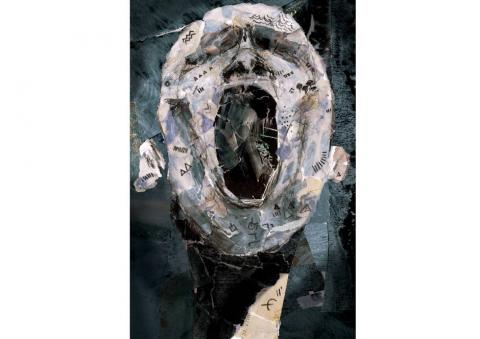"Faith" was written during a transitional period for me as a poet. I had recently left academia to take a full time position at my family's pest control business. As I worked to figure out how to write about roaches and bedbugs and the tenants at the public housing complexes where I spent most of my working hours, I found myself and my poetry shifting. Perhaps it was liberal high mindedness; perhaps it was liberal guilt. Either way, I wanted to write the poetry of these people. The struggle, initially, was in finding the right balance between lyricism and the narrative, but as I pushed deeper into these lives and these stories, I found the poems taking on an elegiac tone, one I was a little uncomfortable with. The task, the challenge, I soon realized, was to figure out how far I was willing to risk sentimentality. "Faith," essentially, is about an exterminator doing rodent work when he and the housing project's maintenance man discover an abandoned infant, dead in the snow. The level of sentimental risk involved remains troubling for me.
 Every serious poet knows sentimentality is probably the greatest cardinal sin of contemporary literature. I'm fairly confident saying we've all been in workshops where a session was suddenly cut short when the poem in question was labeled sentimental. Afterall, what else needs to be said to this poet about this obviously failed poem? We work in a post-confessional time, where narrative and heavy (easy) emotion have been replaced by (some might say equally easy) irony and clever language. Still, as a poet, I was born on the work of Plath and Olds and Whitman (and is there a more sentimental member of the American canon than the great grey poet?). And so sentimentality had always been something I've been willing to risk and none of my poems grapples with that risk more than "Faith."
Every serious poet knows sentimentality is probably the greatest cardinal sin of contemporary literature. I'm fairly confident saying we've all been in workshops where a session was suddenly cut short when the poem in question was labeled sentimental. Afterall, what else needs to be said to this poet about this obviously failed poem? We work in a post-confessional time, where narrative and heavy (easy) emotion have been replaced by (some might say equally easy) irony and clever language. Still, as a poet, I was born on the work of Plath and Olds and Whitman (and is there a more sentimental member of the American canon than the great grey poet?). And so sentimentality had always been something I've been willing to risk and none of my poems grapples with that risk more than "Faith."
At its most basic, sentimentally occurs, according to Webster, whenever a poem is "excessively prone to feelings." More specifically, we reject a poem when that excessive emotion seems manipulative, when we feel our heart strings are being unjustifiably pulled, when the violins in the poem's score seem a bit too loud. During a symposium at AWP in 2010, and later printed in Pleides as the essay "Sentimentality, the Enemy?" Kevin Prufer argues that excessive emotion should be seen as unjustifiable when there is nothing to complicate that emotion, when the grief just hangs there. No one or no thing is implicated. The reader is not asked to question the grief, the circumstances surrounding the grief, or the conveyors of the grief. This argument is, I think, essential to "Faith" and our judgement of whether or not it succeeds in its sentimental risk.
An infant is dead, having either suffocated in the snow or having frozen during the night. To argue that this triggering event doesn't warrant emotion (even excessive emotion) seems absurd to me. But what does the poem do with that triggering event and that emotion? Add to that the structure of the poem (standard narrative with beginning/middle/end and conflict/crisis/pseudo-resolution) and the syntactical elements of the poem (predominately, the manipulation of sentence structure to heighten the emotional tension through a pattern of run ons and fragments).
 If "Faith" implicates anyone, it implicates everyone. There are no heroes here: not Steve, the maintenance man who desperately (futilely) attempts mouth to mouth on the blue-cold baby, and certainly not the passive speaker who simply watches the scene unfold. Even Nature is ambivalent. No larger system is implied as the cause of this tragedy, except perhaps in a quick mention that "ambulances take their time/ in this part of the city." But amid the debris of 40 ounce cans there is a rosary, perhaps a symbol of the ultimate system holding society together, it too having failed the infant and the characters in the poem.
If "Faith" implicates anyone, it implicates everyone. There are no heroes here: not Steve, the maintenance man who desperately (futilely) attempts mouth to mouth on the blue-cold baby, and certainly not the passive speaker who simply watches the scene unfold. Even Nature is ambivalent. No larger system is implied as the cause of this tragedy, except perhaps in a quick mention that "ambulances take their time/ in this part of the city." But amid the debris of 40 ounce cans there is a rosary, perhaps a symbol of the ultimate system holding society together, it too having failed the infant and the characters in the poem.
For what it's worth, this poem isn't based on real events I've experienced. The idea came from many similar all-too-common news stories and my own fear that I would come upon this kind of scene while working. Also, for what it's worth, I rarely write poems like "Faith" now. This is not to say that I have abandoned narrative poetry but rather that I tend to emphasize lyricism now. And since I remain an elegist, my poems continue to explore and risk (with varying levels of success) sentimentality. Perhaps it is because of the fear of sentiment that I use (hide behind?) lyrical techniques. Perhaps it is because of my own complicated feelings about "Faith" and similar poems I have written. I don't know. I don't know if "Faith" is successful, if it earns its excess of emotions. But, I guess, in the end, it's not up to me to decide.
Illustrations by; Grace Russell. Grace is a freelance Illustrator based in London. Her work combines disparate pieces of collage with paint and charcoal to create evocative imagery that is both playful and controlled; the careful interplay between the figurative and abstract give her illustrations a unique visual language that hints at underlying themes and provokes questions to be asked. Grace graduated with a First class BAHons degree in Illustration from the University of Westminster, winning the Achievement Award in her first year. In 2014 she won the V&A Illustration Awards Student Category and was featured as one of Reyker’s emerging artists. She has worked with a range of clients including the V&A museum, Therapy Today, Voyeur (Virgin Australia/Pacific Magazines),Tablet Magazine, SOFFA, PRNMagazine, Sony and P&G. View her website here.




